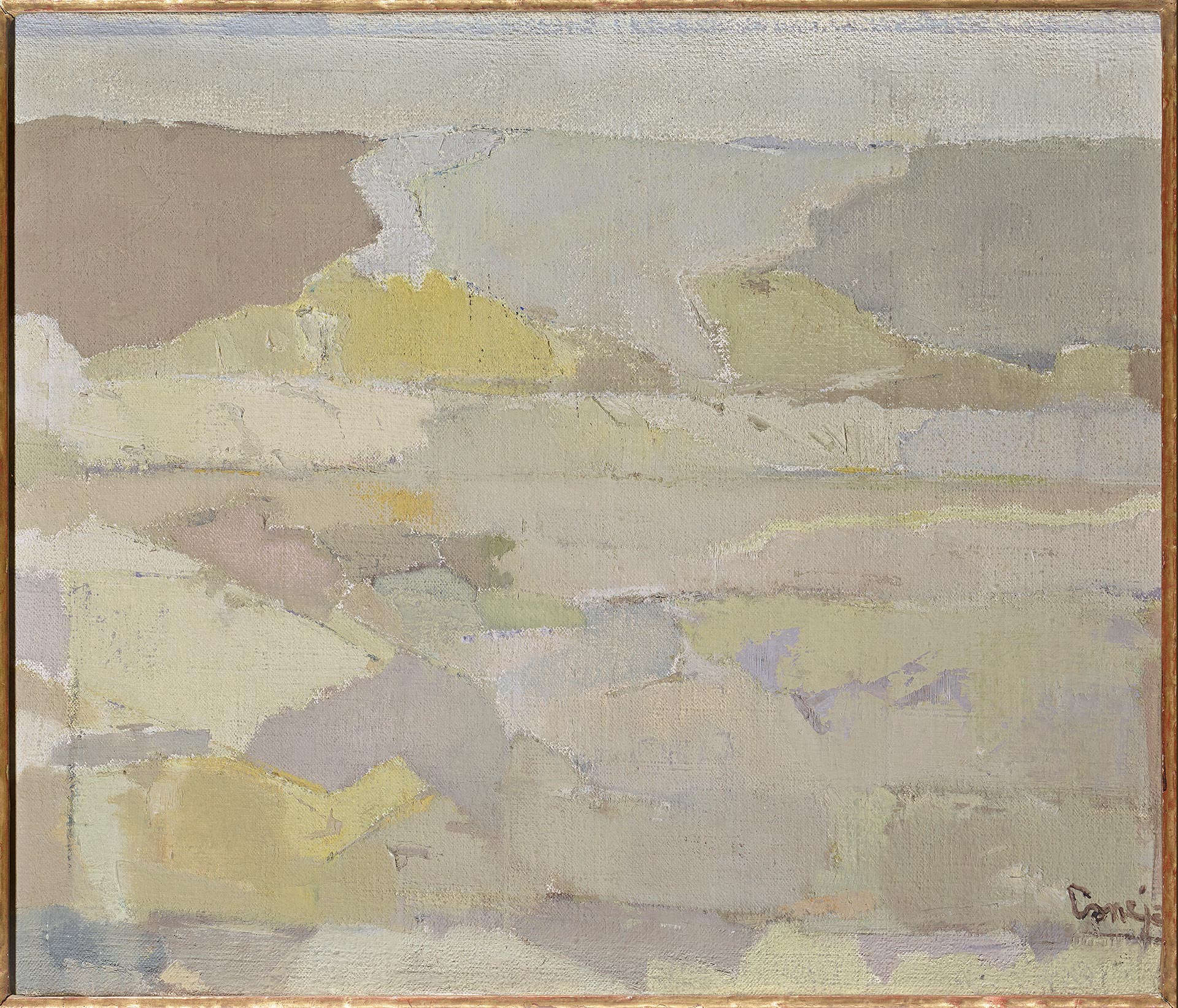
Juan Manuel Díaz-Caneja (Palencia, 1905 – Madrid, 1988)
Landscape
1976
WORK INFORMATION
Oil on canvas, 50 x 61 cm
OTHER INFORMATION
Signed in the lower right-hand corner: "Caneja"
Juan Manuel Díaz-Caneja, primarily a painter of landscapes, participated in the push for artistic renewal that swept across Spain around the 1920s
He moved to Madrid in 1923, intending to study architecture. To prepare for admission to the university school, he began frequenting the studio of Daniel Vázquez Díaz, where he eventually decided to devote himself exclusively to painting. During those early years, he lived at the Residencia de Estudiantes for a time and became acquainted with members of the Madrid avant-garde. In 1927 he met Alberto Sánchez and Benjamín Palencia, with whom he roamed the countryside around Madrid, especially the then rural area of the Vallecas district. With the idea of revitalising Spanish art through the aesthetic exploration of nature, the movement known as the Vallecas School was born. It had an ambitious purpose: to modernise Spanish art by analysing a setting that had nothing to do with the leafy landscapes captured by 19th-century artists. These country rambles attracted the likes of Luis Castellanos, Maruja Mallo, Antonio Rodríguez Luna and, occasionally, Rafael Alberti and Miguel Hernández. The idea of using landscape as an instrument of modernity would persist in the work of Díaz-Caneja long after the Vallecas School years.
In 1929 he travelled to Paris and sought out the company of Spanish artists living there. One legacy of his time in the French capital was a Cubist influence that appeared in his compositions from those years and would remain latent in the rest of his output. In general, his oeuvre was devoted to the analysis of Castilian landscapes. Some have stated that the landscape genre was used by painters in the postwar period as a kind of shelter or safe haven, a way of eluding Franco's censors. This was not the case of Díaz-Caneja. He had worked on landscape compositions in the years prior to the war, and in the wake of the Vallecas School he continued to use that theme throughout his career.
In his works Díaz-Caneja studied the territory of Castile, focusing on how light was reflected off the land. This luminous synthesis led him to develop a chromatic sentiment that based his palette on yellows, ochres and greys. In the 1940s and 50s, the painter included a few figures or solitary structures in his compositions. As the years passed, his commitment to landscape analysis became ever stronger, and in the 1970s his work underwent a formal purification. In fact, as we can see in the Paisaje [Landscape] pictured here, plots of farmland became the building blocks of his compositions: in attempting to convey the essence of Castile on canvas, Díaz-Caneja achieved compositions that border on lyrical abstraction. [Inés Vallejo]

